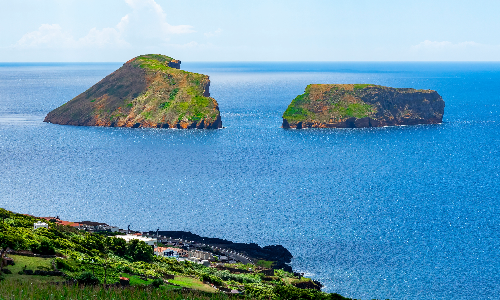The New Kids on the Microbial Block: Exploring Vogesella to Ruegeria
Posted on August 31, 2023 by Clare Baker
Each month, the Microbiology Society publishes the International Journal of Systematic and Evolutionary Microbiology, which details newly discovered species of bacteria, fungi and protists. Here are some of the new species that have been discovered and the places they've been found.
Welcome back to New to Science. Shall we start this month’s edition with a margarita? This one isn’t a pizza or a cocktail but Vogesella margarita, a new species of bacteria isolated from rivers in Southwest China. V. margarita, which gets its name from the pearl like appearance of the colonies on agar plates, is joined by Vogesella aquatica, another new species isolated from Chinese rivers.
Moving from rivers to oceans is where we find our next new microbe. The novel bacterium Brachybacterium atlanticum, was isolated from seawater collected in the North Atlantic Ocean, offshore Terceira Island in the Azores, Portugal. Researchers nearly missed the discovery of B. atlanticum as they initially thought the isolated strain was Brachybacterium paraconglomeratum but corrected themselves thanks to further analyses. B. alanticium joins the genus Brachybacterium which have been found to display a variety of interesting functions. Brachybacterium strains isolated from Asian sea bass showed production of a chemical which displayed antimicrobial activity against both Gram positive and negative bacteria.

Unfortunately, for our next new species we are now moving from the beauty of the Azores to the faecal material of a rabbit. Pantoea leporis is facultative anaerobic bacterium, meaning it can respire both anaerobically and aerobically depending on whether oxygen is present. This new microbe was discovered during a study to determine if carbapenem-resistant bacteria were present in the faecal material of a rabbit. Carbapenems are a group of broad-spectrum antibiotics which are often used for multidrug-resistant bacterial infections.
Let’s move to the Republic of Korea now for our next microbe. Ruegeria spongiae is a bacteria isolated from Callyspongia elongata, a sea sponge found in Chuja-myeon, Jeju-si, Jeju-do. While bacteria are a source of food for sponges, some also have a symbiotic (mutually beneficial) relationship with sponges, supporting them with digestion. Symbiotic bacteria that can successfully evade processes and immune responses of sponges have the potential for use in bioengineering as they are associated with the biosynthesis of secondary metabolites.
And finally, we have our last new microbe Faecalibacterium hominis …Or do we? Our last stop in new to science comes from new research undertaken to evaluate the taxonomic relationship between F. hominis and Faecalibacterium duncaniae. The research determined that F. hominis is actually a strain of F. duncaniae rather than a new species as proposed by Liu et al. in 2023.

